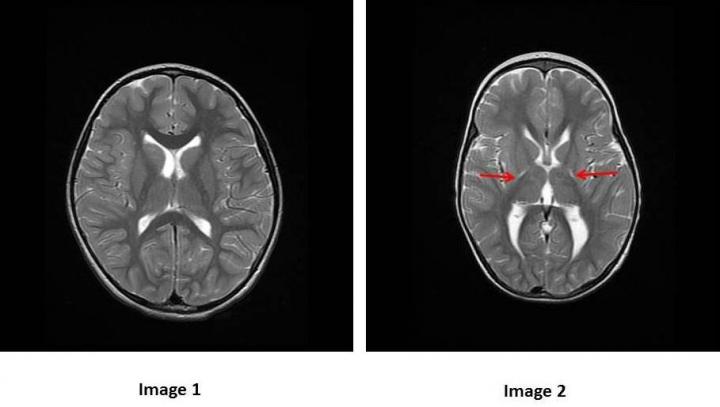![Image 1: MRI of the brain of a healthy child: gray matter is pale gray and white matter is dark gray. Image 2: MRI of the brain of a child with cerebral palsy: red arrows show scarring over the central gray matter leading to stiffness and problems in the coordination of movements. [McGill University Health Centre]](https://genengnews.com/wp-content/uploads/2018/08/96596_web1014117018-1.jpg)
Image 1: MRI of the brain of a healthy child: gray matter is pale gray and white matter is dark gray. Image 2: MRI of the brain of a child with cerebral palsy: red arrows show scarring over the central gray matter leading to stiffness and problems in the coordination of movements. [McGill University Health Centre]
Cerebral palsy (CP) is the most common form of physical disability in children, with an incidence rate of approximately two cases for every 1,000 live births. Historically, CP has been attributed to an array of factors such as asphyxia, stroke, and infections in the developing brains. However, researchers from The Hospital for Sick Children (SickKids) and the Research Institute of the McGill University Health Centre (RI-MUHC) have uncovered evidence for genetic causes of CP that may precipitate a change in the clinical diagnostics for children and expecting mothers.
“Our research suggests that there is a much stronger genetic component to cerebral palsy than previously suspected,” explained lead author Maryam Oskoui, M.D., pediatric neurologist at The Montreal Children's Hospital (MCH) of the MUHC and co-director of the Canadian Cerebral Palsy Registry. “How these genetic factors interplay with other established risk factors remains to be fully understood. For example, two newborns exposed to the same environmental stressors will often have very different outcomes. Our research suggests that our genes impart resilience or conversely a susceptibility to injury.”
The findings from this study were published recently in Nature Communications through an article entitled “Clinically relevant copy number variations detected in cerebral palsy.”
The investigators performed genetic tests on 115 children with CP, many of whom had been previously identified with other risk factors as a cause for their disease. DNA tests were also performed on the children’s parents, in order to paint a more comprehensive picture of the genetic background for CP. The researchers found that about 10% of the patients had copy number variations (CNVs) in clinically relevant genes.
“When I showed the results to our clinical geneticists, initially they were floored,” said Stephen Scherer, Ph.D., principal investigator on the current study and Director of The Centre for Applied Genomics (TCAG) at SickKids. “In light of the findings, we suggest that genomic analyses be integrated into the standard of practice for diagnostic assessment of cerebral palsy.”
CNVs are structural alterations to an individual’s genome that lead to deletion, additions, or some reorganization of gene sequences that produces aberrant genetic products. Typically, CNVs occur in less than 1% of the general population but are increasingly being looked at risk factors, as they are associated with and array of genetic disease states.
“It's a lot like autism, in that many different CNVs affecting different genes are involved which could possibly explain why the clinical presentations of both these conditions are so diverse,” noted Dr. Scherer. “Interestingly, the frequency of de novo, or new, CNVs identified in these patients with cerebral palsy is even more significant than some of the major CNV autism research from the last 10 years. We've opened many doors for new research into cerebral palsy.”
While the researchers were excited by their findings, they are now urging the clinical community to reevaluate the diagnostic parameters surrounding CP, as they noted that their CNV data would have impacted the diagnosis or classification in almost 10% of the patients they studied.
“Finding an underlying cause for a child's disability is an important undertaking in management,” stated co-author Michael Shevell, M.D. co-director of the Canadian Cerebral Palsy Registry and chair of the Department of Pediatrics at the MCH-MUHC. “Parents want to know why their child has particular challenges. Finding a precise reason opens up multiple vistas related to understanding, specific treatment, prevention and rehabilitation. This study will provide the impetus to make genetic testing a standard part of the comprehensive assessment of the child with cerebral palsy.”



